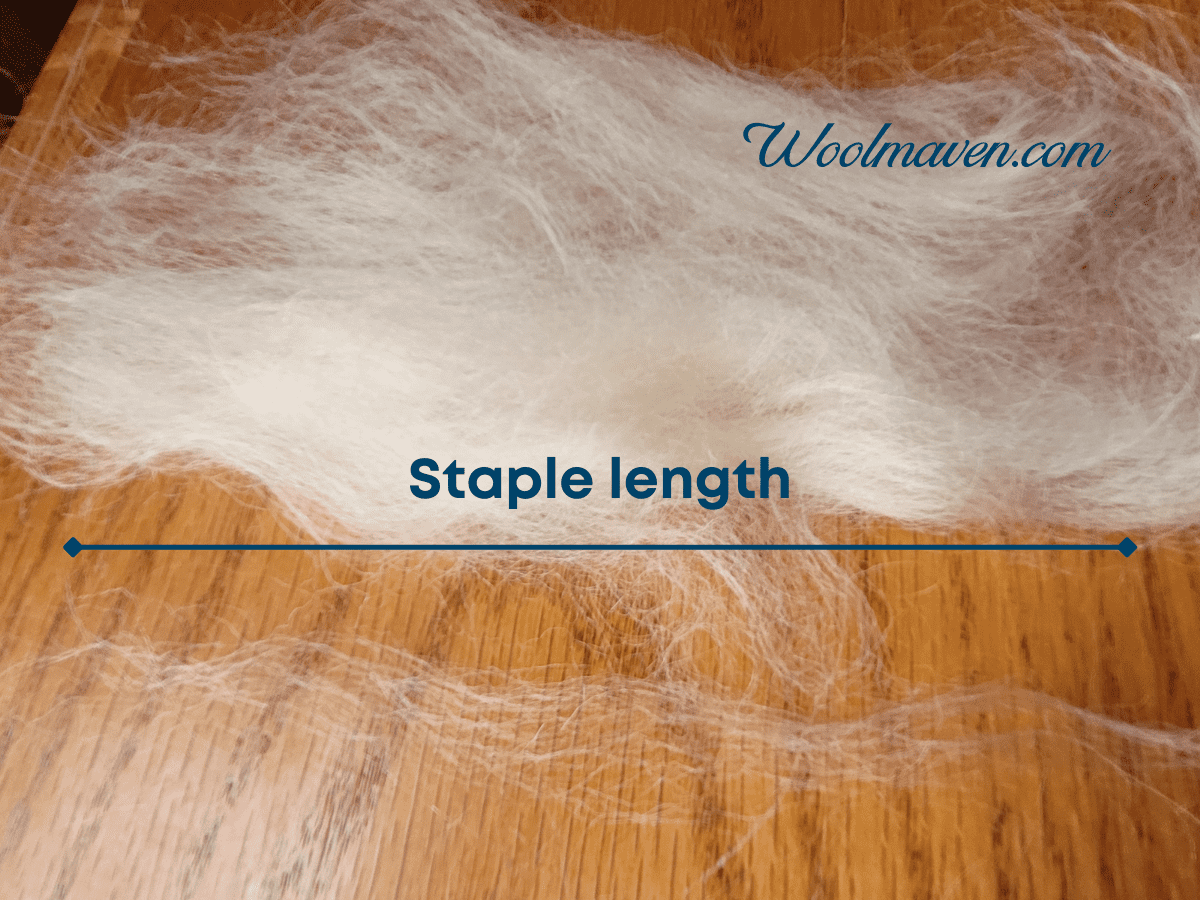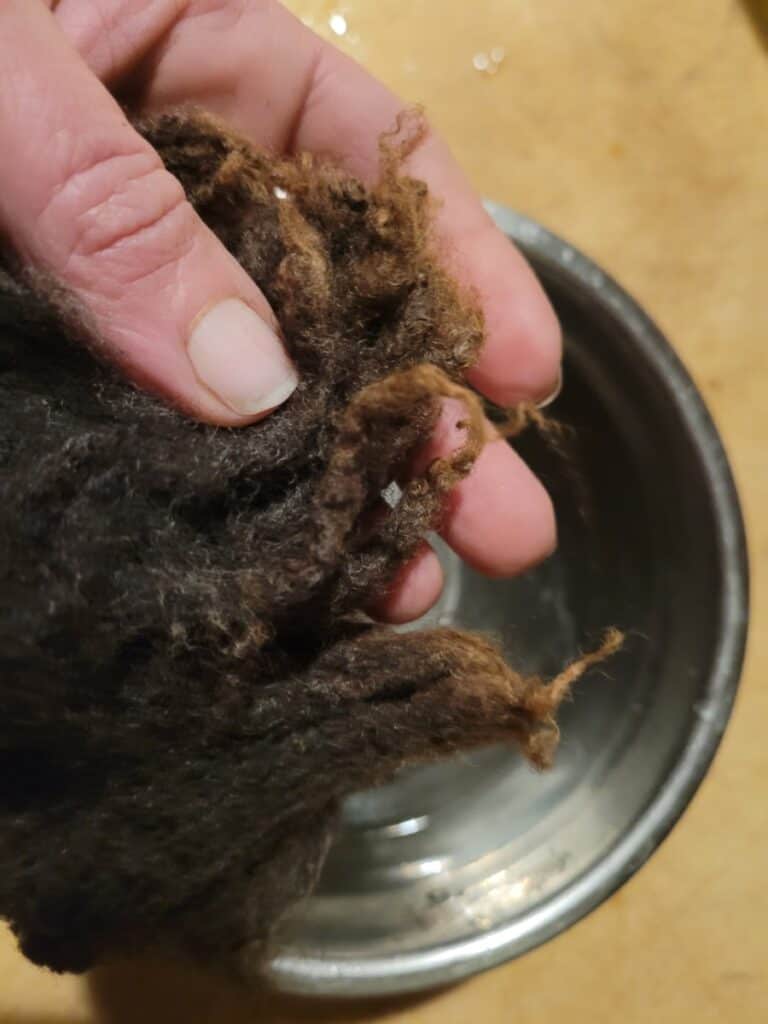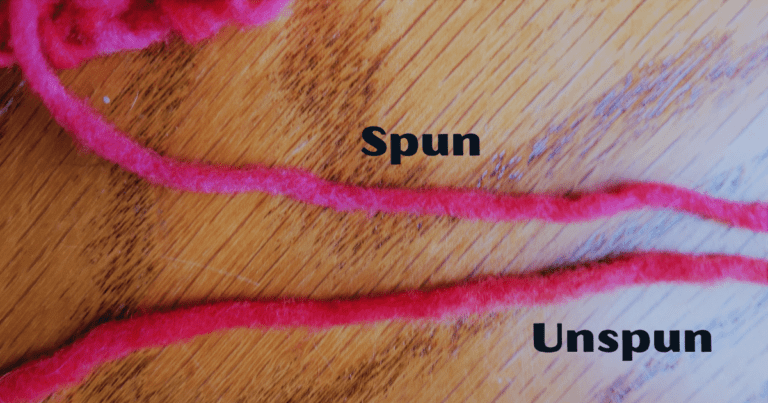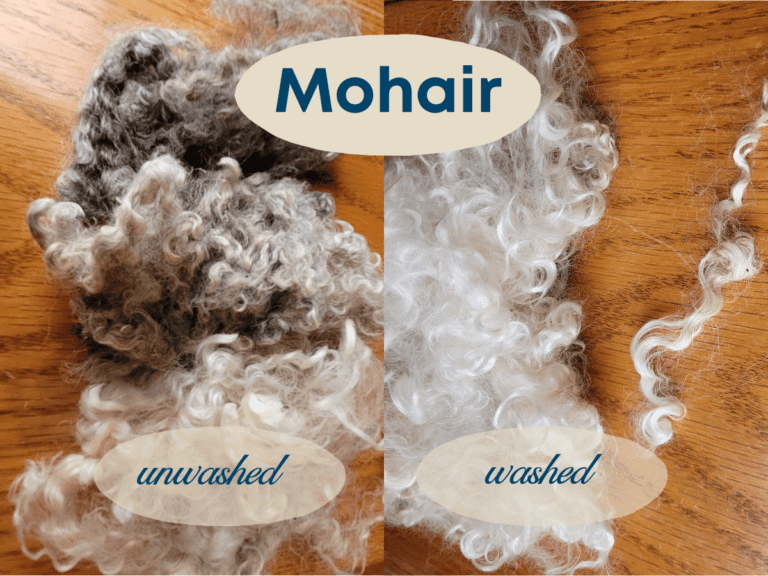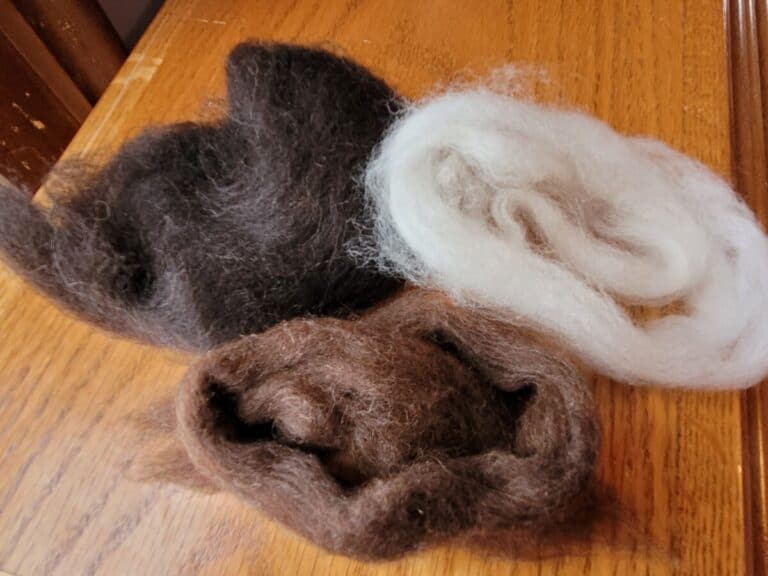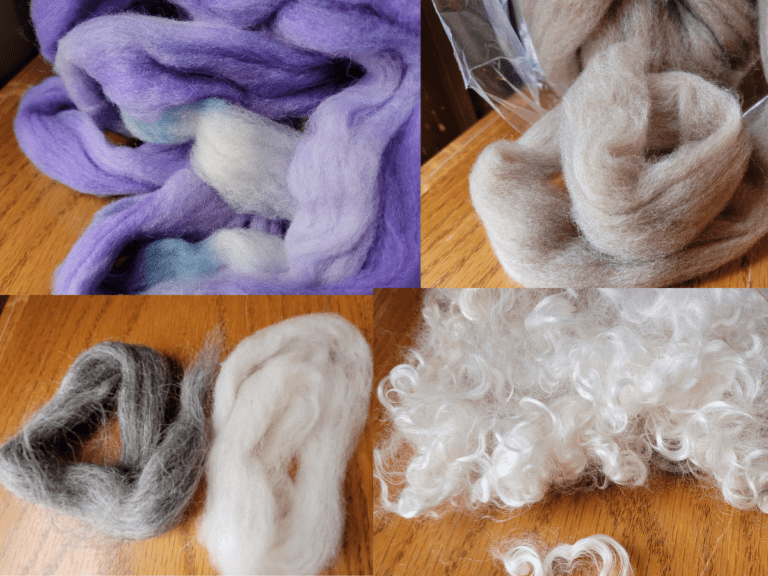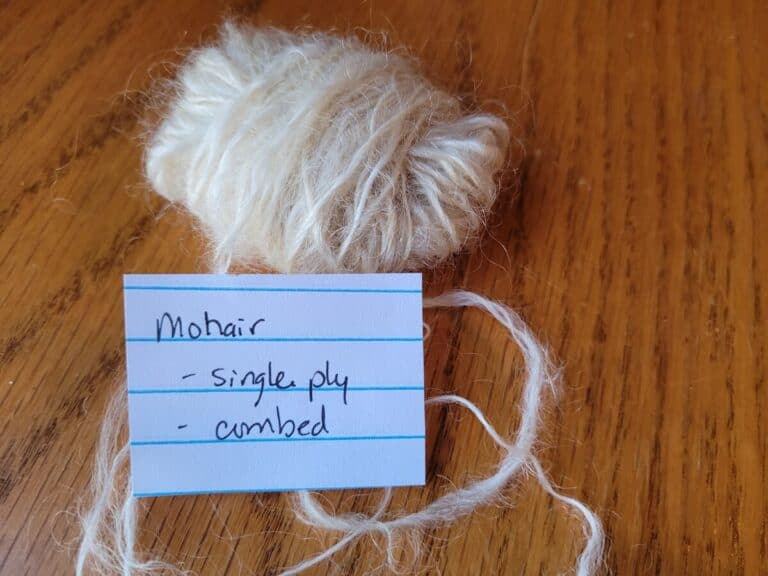What Staple Length Is Needed For Wool To Be Spun?
Before you get some wool to start your spinning project, you need to know what you are looking for in that wool, specifically how long should the staple length of wool be for you to spin it?
Wool with a staple length of 3-5 inches will be the easiest to spin. Wool with shorter or longer staple lengths can be spun with the appropriate fiber preparation to match the wool and the intended use, mainly woolen or worsted style yarn.
While all wool can be spun in one way or another, most folks are looking to start with a likely to succeed wool of a workable length.
What Is Staple Length? goes over more of the basics of why staple length is important in wool and why it matters to handspinners.
Beginners should start with 3-5 inch staple length wool
Beginners should start with wool that has a minimum staple length of 3 inches and a maximum staple length of 5 inches. If you can, lean towards 3.5-4 inches. This is the sweet spot!
You also need to consider the fiber diameter of the wool that you are going to be spinning.
The easiest wool to work with is going to be a medium wool. These are nice, all purpose wools that will be easier for you to manage.
As you get better with your spinning, be sure to branch out and try some different staple lengths and see if you actually prefer a fine or long wool, but for now, use 3.5-4 inch medium wool.
I generally do not measure my wool, I’m using wool from a few of our sheep and I get what I get!
Just to see how this all plays out, I measured some of the wool that I am working with now, from our one and only black ewe. Her fleece is just a touch over 3 inches and, for me, is almost too short.
If it was more like 2.5, I don’t think I could handle it without sending away the fleece to be processed into roving or really getting a ton better with my carding skills!
Is Merino Hard To Spin? gives tips on working with merino, a wonderful fiber that is more of a intermediate beginner level fiber source.
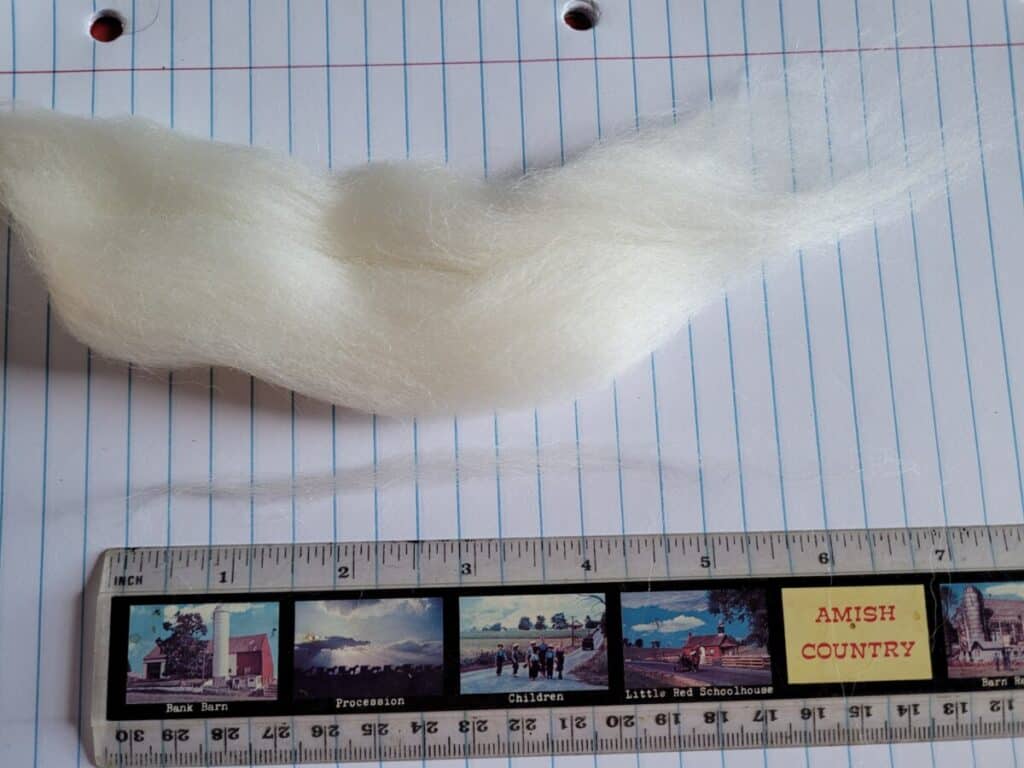
Match the wool staple length to the wool prep
Generally speaking, the shorter staple length wools should be carded for spinning and the longer staple length wools should be combed for spinning.
The medium wools can go either way, depending upon what you are doing, with most folks using the shorter medium wools as carded rolags or roving.
Woolen vs worsted spinning determines wool prep
What we are really getting to here is what is the end result your are looking for in your project? You have to get specific and work backwards from the end result to see what you actually need to start with!
Do you want a sweater with a ton of stitch definition, like an Aran pattern? Then you’ll want a more clean look (not fluffy) to your yarn so those stitches that you just worked so hard on will show up.
This means you need to be spinning worsted yarn and you’ll probably want to use a wool with a bit more length, so medium wools are good here.
Are you looking to make a super warm and fluffy hat or mittens? This will require yarn that has a lot of insulating ability, which means you want to spin woolen style.
To get the fluffy yarn, you are going to want to use a finer wool that has a shorter staple length and has been carded into roving.
Carding takes fibers that are short enough to be challenging to spin and puts them together in a long 1-2 inch wide cloud of fiber that is wonderful to spin and perfect for the warm hat and mittens you are making!
I have to put in a qualifier here: one of the most enticing aspects of wool craft is that your imagination is the only limit you have. If I can think of it or see someone else doing it, I can try it and see what happens.
This is how really neat discoveries are made by fellow wool enthusiasts.
So, what does this have to do with staple length? Just this, nothing is written in stone, you can prep and spin your wool any way that you want to.
Start with the easy ways that are most likely to give you results and then get creative and see what you can do.
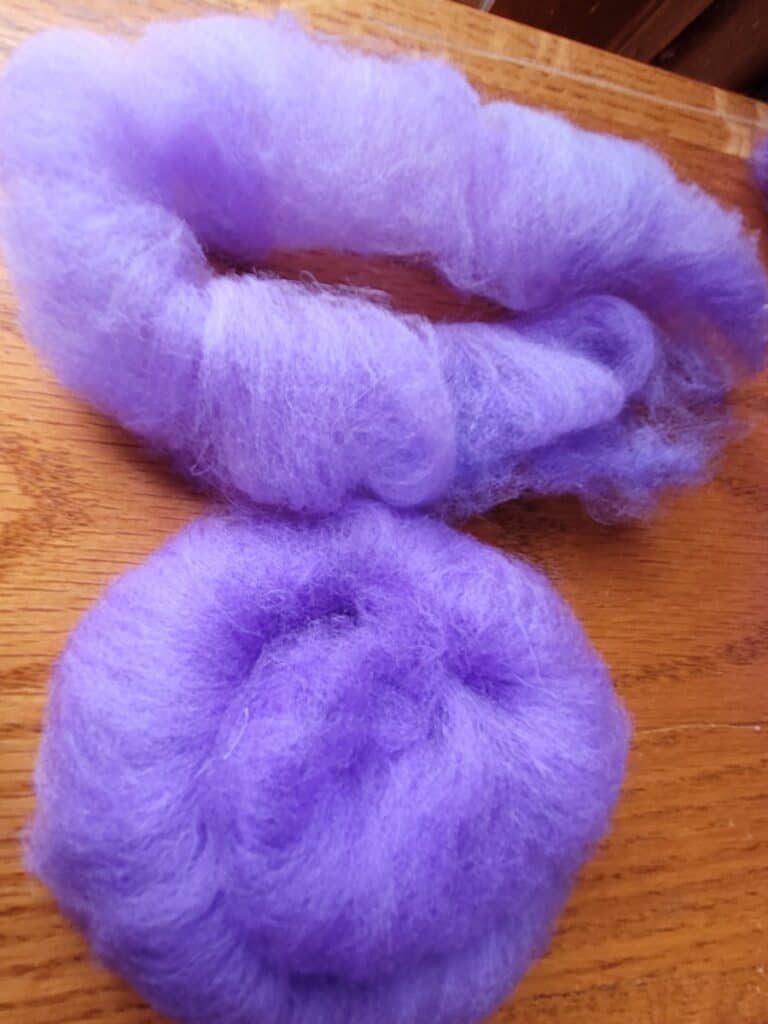
What can you do if your wool is too short?
If the wool you are working with is too short for you to work with, consider having the wool processed for you.
I have always done my own wool processing, with basic tools then just worked with what I could make. I like the way I prepare wool for spinning, but this was unnecessarily limiting myself.
I have started to expand my spinning experience, by ordering some neat breeds that I have never worked with and am floored by how much easier the wool is to use than the wool I have been prepping for myself.
If the short staple length of your wool is driving you crazy, definitely have your wool processed or, at the very least, buy some processed fiber and learn with that first, before using what you have.
You might just need a bit of help getting started, then be able to use the shorter stapled wool when you have more spinning experience.
The other thing to think about is your spinning method. Short wools will be best spun woolen. Woolen spinning takes advantage of the shorter staple length and makes it an asset rather than a challenge.
What can you do if your wool is too long?
Once again, if your wool is too long for you, look to your processing and spinning methods.
You need to have a match between your wool choice, how you prep the fiber and how you spin to have wool that is easy for you to work with.
After you have checked to see if you are using your longer stapled wool to it’s best advantage, consider blending it with something else to give it more bulk.
I have seen some folks in forums suggest cutting the wool with scissors, to me this is almost a crime!
Really dig deep and see if there is something about what you are doing that needs to be adjusted before you take such a drastic step. If I had to guess, you are using the wrong wool for your purpose.
If you are working with wool from your own sheep, having a staple length that is too long is a fleece management issue.
Reconsider and adjust your shearing schedule, since you are getting fleece lengths that your are not happy with.
Many of the long wool breeds need shorn twice a year, to keep the fleece manageable to make it useable for hand spinners and wool crafters.
If your fleece is out of control, you need to have the shearer in sooner.
Test blend some of the wool
A final thing you can do to make your wool seem to have a more ideal staple length is to blend it with something else.
Obviously, this does not change the actual staple length of your wool but does make it more spinner friendly.
New Mexico State University has a nice article on wool grades going over the microns as well as staple lengths common to specific breeds.

